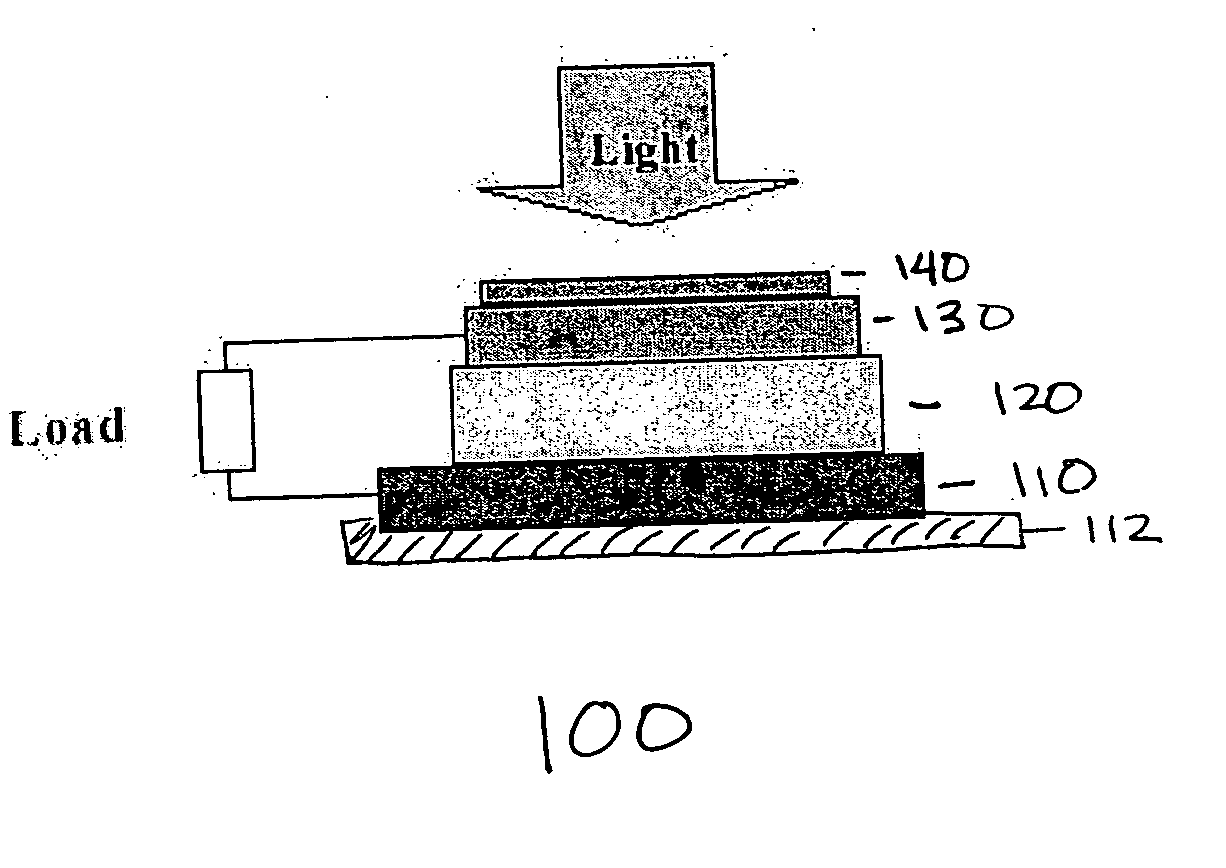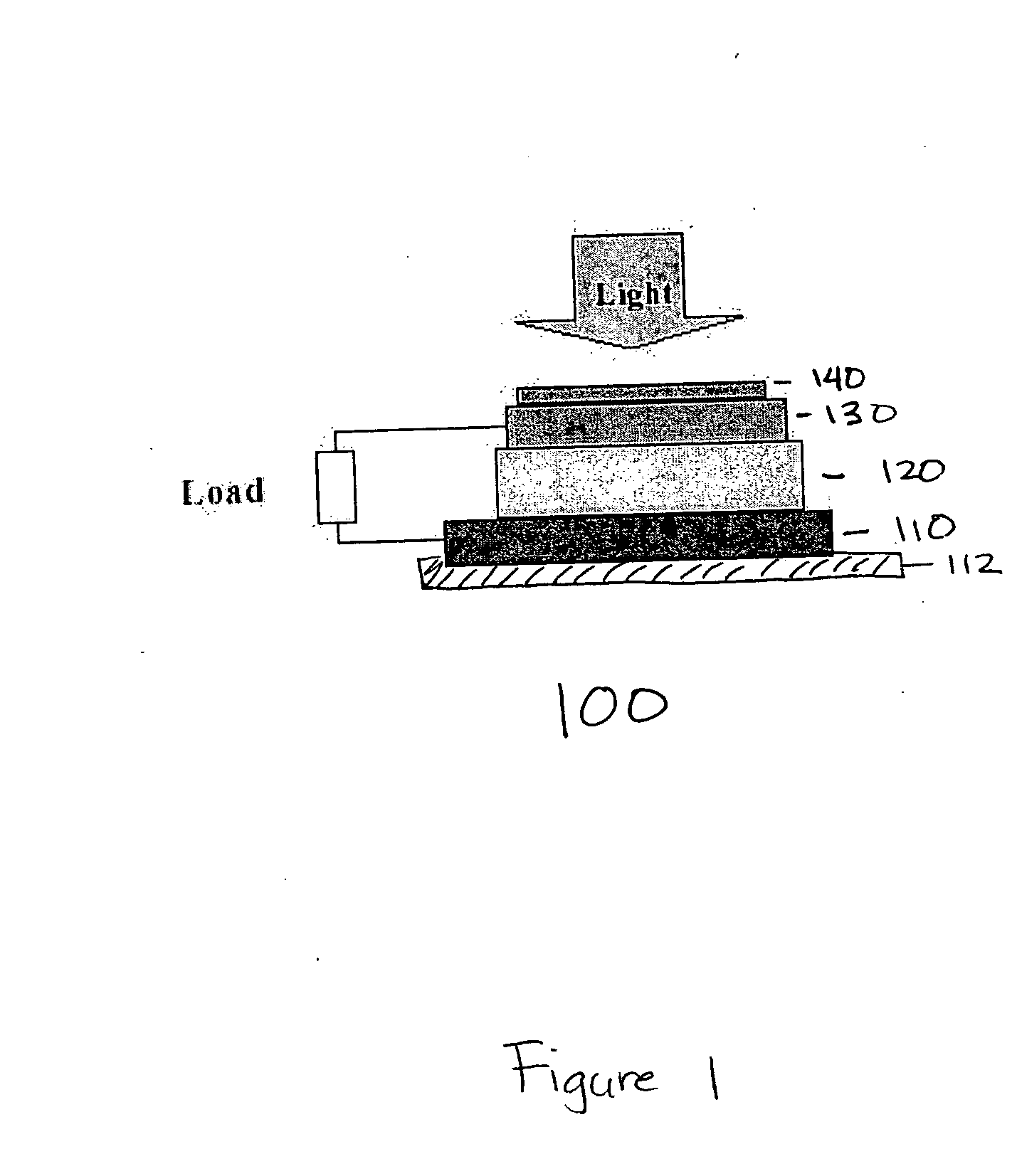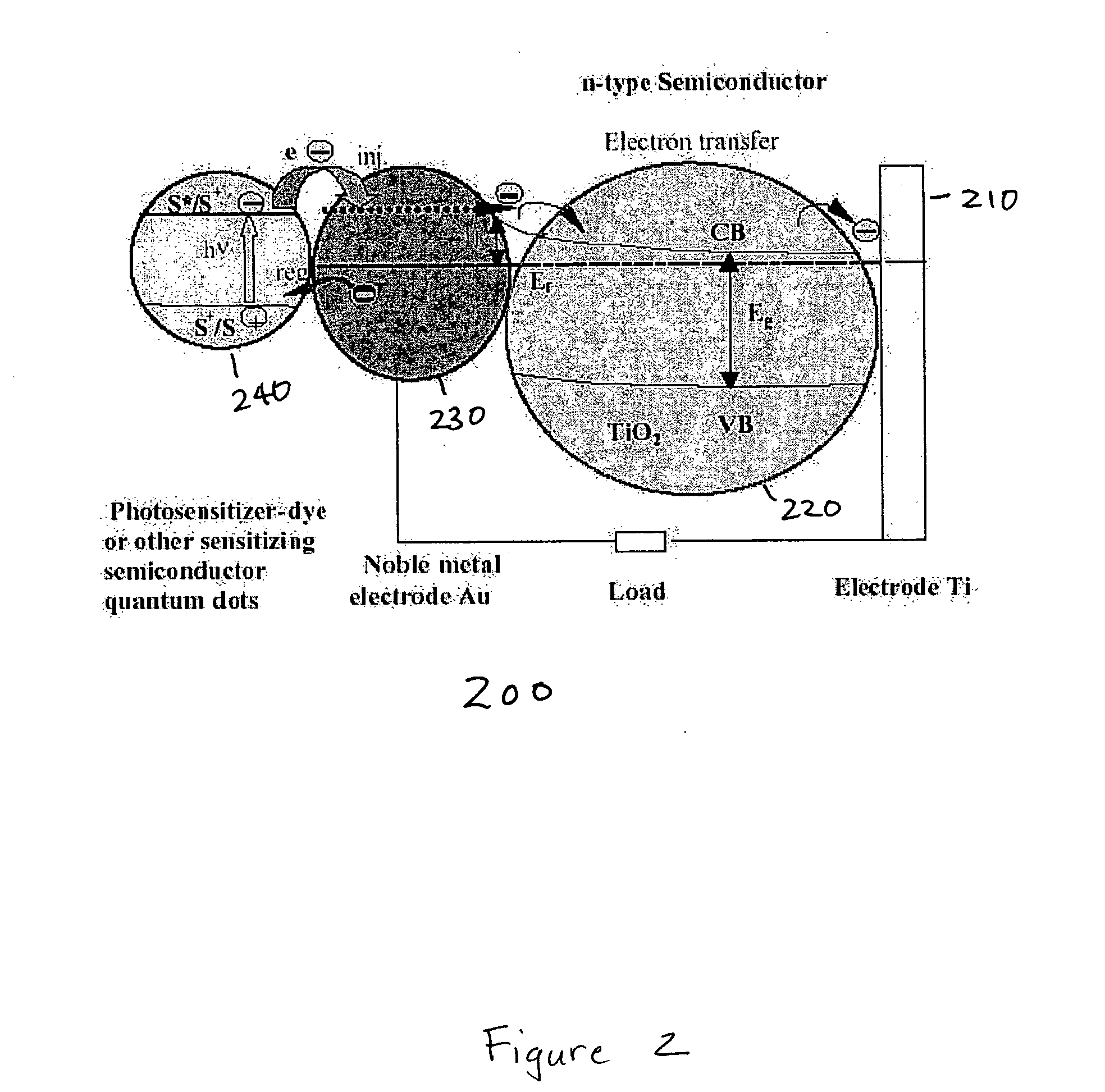Self-assembly methods for the fabrication of McFarland-Tang photovoltaic devices
a technology of photovoltaic devices and self-assembly methods, which is applied in the direction of material nanotechnology, electrolytic capacitors, nanotechnology, etc., can solve the problems of high cost of building and operation, limited material types, and high cost of film materials manufactured in large manufacturing facilities
- Summary
- Abstract
- Description
- Claims
- Application Information
AI Technical Summary
Problems solved by technology
Method used
Image
Examples
example 1
InP Q-Dot Sensitized Au / TiO2 / Ti on a Silicon Substrate McFarland-Tang Solar Cell
[0054] In this example a McFarland-Tang solar cell built on a silicon substrate is described. In this device, a Ti layer was deposited on a silicon substrate using a vacuum deposition method in a thickness of about 50 nm. A TiO2 anatase thin film was self-assembled using the layer-by-layer ESA methodology of the present invention using a 15 nm TiO2 anatase as the nanoparticle and 3-MPS (3-mercapto-1-propanesulfonic acid sodium salt) as the polyelectrolyte. A 30 nm Au film was then self-assembled on the TiO2 layer by the NISA method of the present invention using HAuCl4 as the gold source and NaHB4 as the reduction agent. A monolayer of bi-functional thiol molecules was used to modify the surface of the Au film to enhance the up taking of the InP Q-dots. A solar simulator was used as the light source to illuminate the device from the InP Q-dot film side.
[0055] Tuning the Q-dot particle size resulted in ...
example 2
Change in Thickness of Components Results in Different PV Response
[0057] A self-assembled McFarland-Tang solar cell built on a silicon substrate is described in this example. In this device, a Ti layer was deposited on a silicon substrate using a vacuum deposition method to a thickness of about 150 m and used as the electrode. A TiO2 anatase thin film of about 200 m was self-assembled using the layer-by-layer ESA methodology of the present invention using a 15 m TiO2 anatase as the nanoparticle and 3-MPS as the polyelectrolyte. A 100 nm Au film was then self-assembled on the TiO2 layer by the NISA method of the present invention using HAuCl4 as the gold source and NaHB4 as the reduction agent. A monolayer of bi-functional thiol molecules was used to modify the surface of the Au film to enhance the up taking of the InP Q-dots which had a thickness of about 80 nm.
[0058] A solar simulator was used as the light source to illuminate the device from the InP Q-dot film side. FIG. 7 illus...
PUM
 Login to View More
Login to View More Abstract
Description
Claims
Application Information
 Login to View More
Login to View More - R&D
- Intellectual Property
- Life Sciences
- Materials
- Tech Scout
- Unparalleled Data Quality
- Higher Quality Content
- 60% Fewer Hallucinations
Browse by: Latest US Patents, China's latest patents, Technical Efficacy Thesaurus, Application Domain, Technology Topic, Popular Technical Reports.
© 2025 PatSnap. All rights reserved.Legal|Privacy policy|Modern Slavery Act Transparency Statement|Sitemap|About US| Contact US: help@patsnap.com



